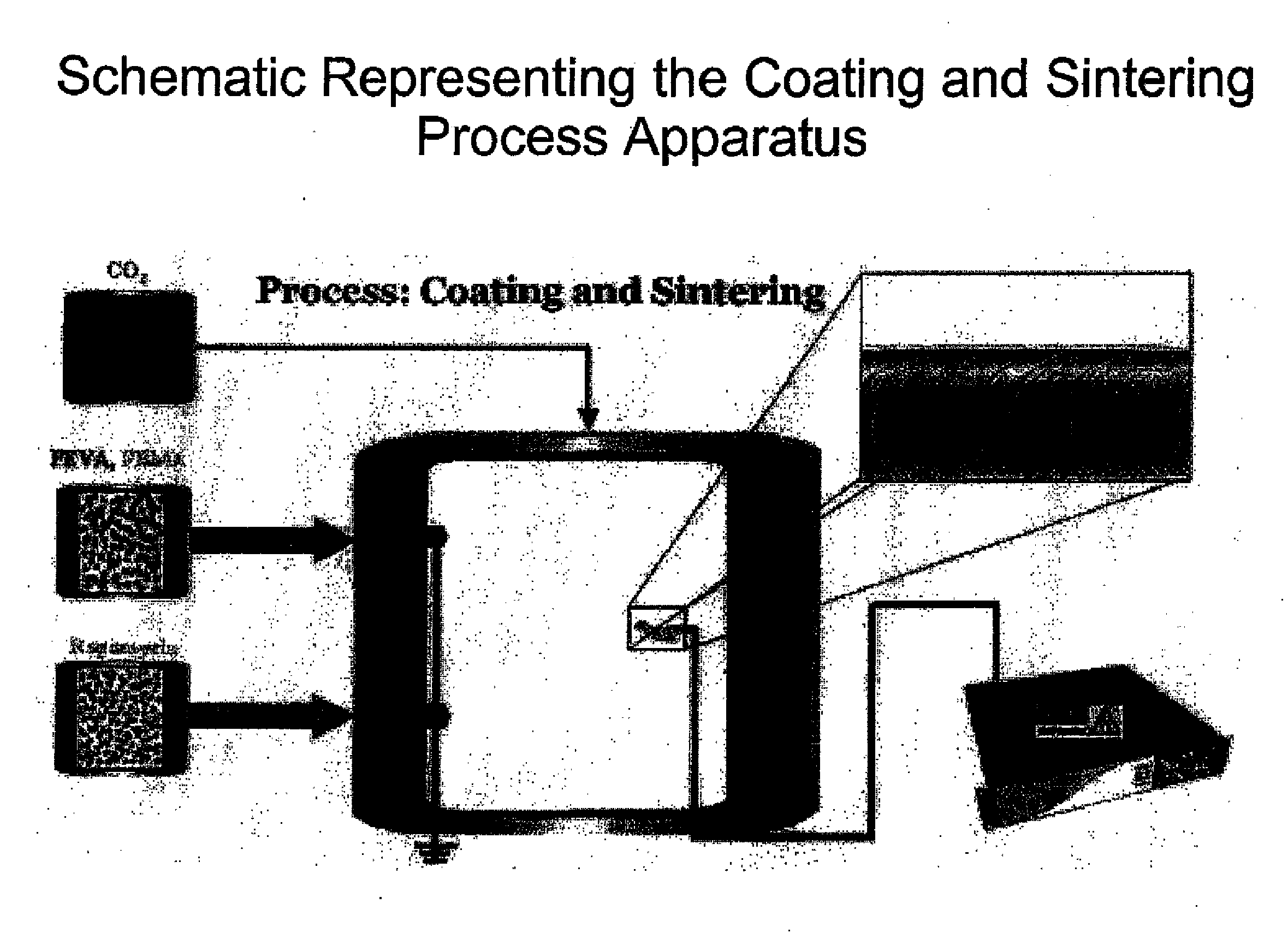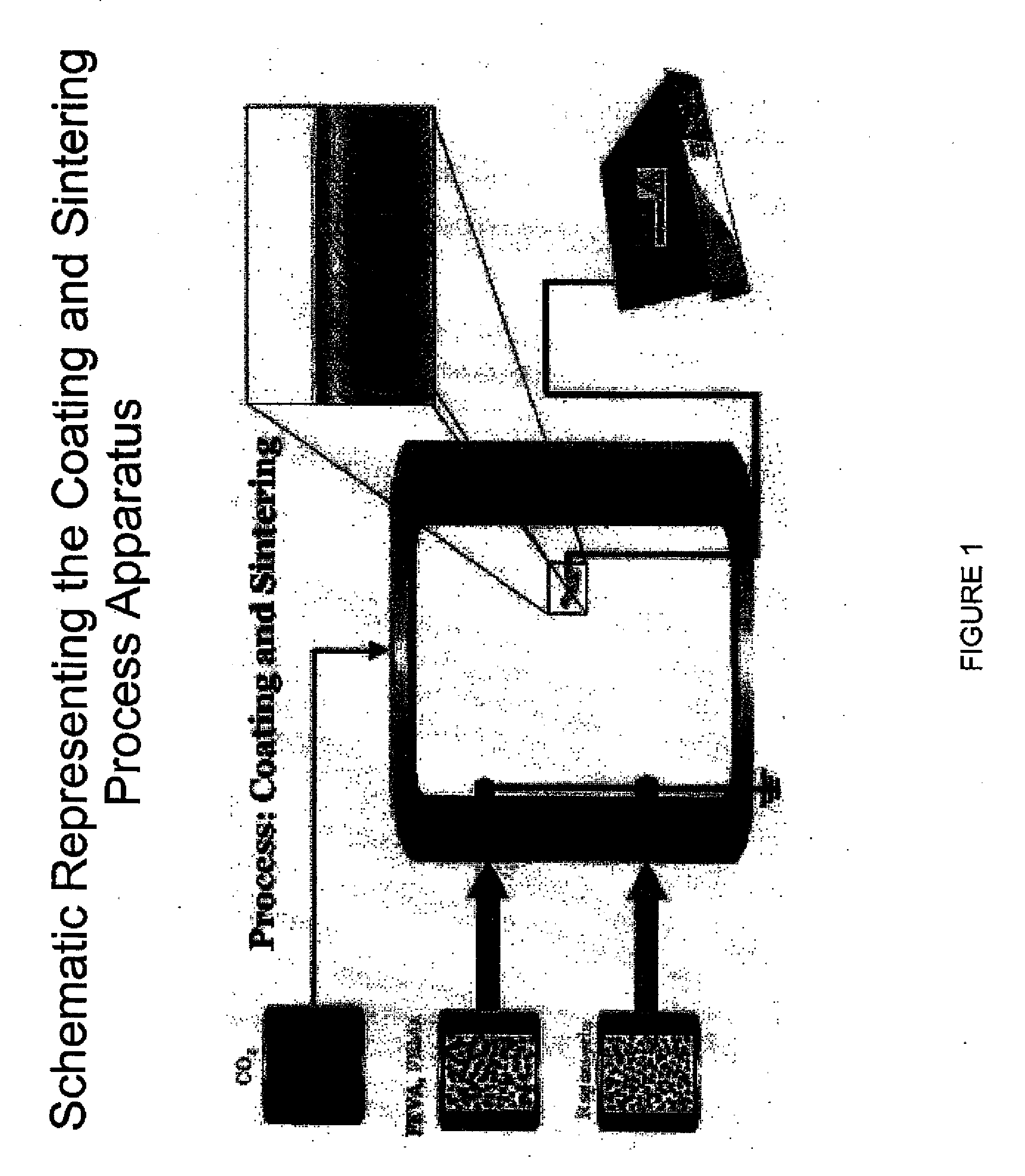Polymer Films for Medical Device Coating
- Summary
- Abstract
- Description
- Claims
- Application Information
AI Technical Summary
Benefits of technology
Problems solved by technology
Method used
Image
Examples
example 1
[0103]A biocompatible fluoropolymer or other hydrophobic biocompatible polymer is dissolved in an appropriate supercritical solvent such as carbon dioxide. This solution is maintained in a syringe pump or other pressure vessel and transferred to a spraying vessel that is maintained above the compressed gas's critical pressure and temperature as modified by the solute. The device or other substrate to be coated is held such that it can placed at an electrical potential relative to a nozzle through which the compressed gas solution is to be sprayed (10 kV, for example, with the device held at 5 kV and the nozzle held at −5 kV). The electrical field between the device and the nozzle is designed to be homogenous and constant. The polymer solution is expanded through the restrictor nozzle by electrostatic rapid expansion of a supercritical solution (e-RESS), thereby coating the device with a fine film controllable in both thickness and conformality. Subsequent processing in the gas in it...
example 2
[0104]A biocompatible fluoropolymer or other hydrophobic biocompatible polymer is dissolved in an appropriate supercritical solvent such as carbon dioxide. This solution is maintained in a syringe pump or other pressure vessel and transferred to a spraying vessel that is maintained above the compressed gas's critical pressure and temperature as modified by the solute. The device or other substrate to be coated is held such that it can placed at an electrical potential relative to a nozzle through which the compressed gas solution is to be sprayed (10 kV, for example, with the device held at 5 kV and the nozzle held at −5 kV). The electrical field between the device and the nozzle is designed to be homogenous and constant. The polymer solution is expanded through the restrictor nozzle by electrostatic rapid expansion of a supercritical solution (e-RESS), thereby coating the device with a fine film controllable in both thickness and conformality. Subsequent processing in the gas in it...
PUM
| Property | Measurement | Unit |
|---|---|---|
| Temperature | aaaaa | aaaaa |
| Temperature | aaaaa | aaaaa |
| Temperature | aaaaa | aaaaa |
Abstract
Description
Claims
Application Information
 Login to View More
Login to View More - R&D
- Intellectual Property
- Life Sciences
- Materials
- Tech Scout
- Unparalleled Data Quality
- Higher Quality Content
- 60% Fewer Hallucinations
Browse by: Latest US Patents, China's latest patents, Technical Efficacy Thesaurus, Application Domain, Technology Topic, Popular Technical Reports.
© 2025 PatSnap. All rights reserved.Legal|Privacy policy|Modern Slavery Act Transparency Statement|Sitemap|About US| Contact US: help@patsnap.com



